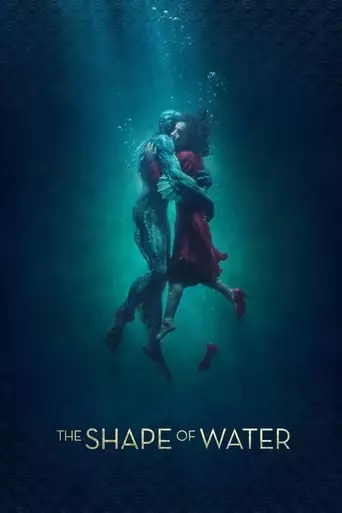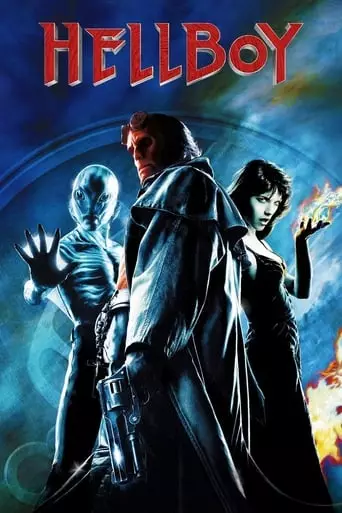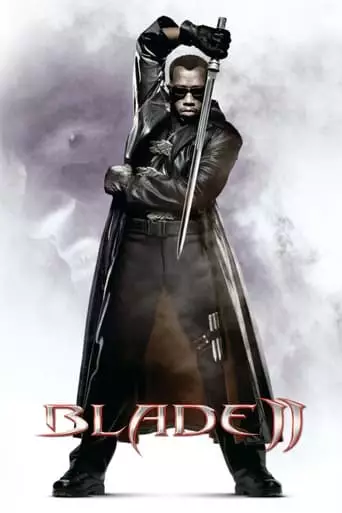An other-worldly story, set against the backdrop of Cold War era America circa 1962, where a mute janitor working at a lab falls in love with an amphibious man being […]

An other-worldly story, set against the backdrop of Cold War era America circa 1962, where a mute janitor working at a lab falls in love with an amphibious man being […]

In the final days of World War II, the Nazis attempt to use black magic to aid their dying cause. The Allies raid the camp where the ceremony is taking […]

A rare mutation has occurred within the vampire community – The Reaper. A vampire so consumed with an insatiable bloodlust that they prey on vampires as well as humans, transforming […]

Hellboy, his pyrokinetic girlfriend, Liz, and aquatic empath, Abe Sapien, face their biggest battle when an underworld elven prince plans to reclaim Earth for his magical kindred. Tired of living […]

Using massive piloted robots to combat the alien threat, earth’s survivors take the fight to the invading alien force lurking in the depths of the Pacific Ocean. Nearly defenseless in […]

Spain, 1939. In the last days of the Spanish Civil War, the young Carlos arrives at the Santa Lucía orphanage, where he will make friends and enemies as he follows […]

Living with her tyrannical stepfather in a new home with her pregnant mother, 10-year-old Ofelia feels alone until she explores a decaying labyrinth guarded by a mysterious faun who claims […]
Guillermo del Toro: The Master of Dark Fantasy and Emotional Storytelling
Guillermo del Toro is a visionary filmmaker celebrated for his ability to blend the macabre and the magical. Known for his richly imaginative worlds, deeply empathetic characters, and a mastery of visual storytelling, del Toro’s work explores the intersection of beauty and horror, often delving into themes of innocence, monstrosity, and moral ambiguity. With films like Pan’s Labyrinth (2006), The Shape of Water (2017), and Hellboy (2004), del Toro has established himself as one of the most influential and beloved directors of his generation.
Early Life and Inspirations
Guillermo del Toro Gómez was born on October 9, 1964, in Guadalajara, Jalisco, Mexico. From an early age, he showed a fascination with storytelling and the fantastical. Raised in a strict Catholic household, del Toro developed a keen interest in mythology, fairy tales, and the macabre, which became recurring motifs in his films.
As a teenager, del Toro studied special effects and makeup artistry under legendary artist Dick Smith (The Exorcist), honing his craft in creature design. He later attended the University of Guadalajara, where he studied film and developed a passion for blending practical effects with innovative storytelling.
Early Career and Breakthrough
Del Toro’s first feature film, Cronos (1993), was a horror story about immortality and humanity, blending Gothic aesthetics with emotional depth. The film won the International Critics’ Week Prize at the Cannes Film Festival and established del Toro as a rising talent in the world of cinema.
In 1997, del Toro directed Mimic, a Hollywood-backed creature feature. While the production faced challenges, it allowed del Toro to work on a larger scale and further develop his visual style.
Hallmarks of Del Toro’s Style
Del Toro’s films are distinguished by their vivid imagery, elaborate creature designs, and intricate world-building. Common themes and elements in his work include:
Monsters as Metaphors: Del Toro often portrays monsters as sympathetic beings, representing societal outcasts or internal struggles. Films like The Shape of Water and Pan’s Labyrinth challenge traditional notions of good and evil.
Childhood and Innocence: Many of his stories are told through the eyes of children or feature young protagonists, emphasizing the purity and resilience of youth amid chaos and horror.
Fascination with the Supernatural: Ghosts, mythical creatures, and fantastical realms are integral to del Toro’s storytelling, serving as allegories for larger human conflicts.
Meticulous Visual Detail: From his use of color to his intricately designed sets and costumes, del Toro’s films are visually stunning, often resembling living paintings.
Key Films
Pan’s Labyrinth (2006): Set in post-Civil War Spain, this dark fantasy follows a young girl, Ofelia, who discovers a magical labyrinth while navigating the horrors of her stepfather’s tyranny. A haunting blend of fairy tale and historical drama, the film won three Academy Awards and is widely regarded as del Toro’s masterpiece.
Hellboy (2004) and Hellboy II: The Golden Army (2008): These adaptations of Mike Mignola’s comic series showcased del Toro’s talent for blending humor, action, and mythological depth. Ron Perlman’s portrayal of the titular character became iconic under del Toro’s direction.
The Shape of Water (2017): A love story between a mute woman and a mysterious amphibian creature, this film won four Academy Awards, including Best Picture and Best Director, cementing del Toro’s place among cinema’s greats.
Crimson Peak (2015): A Gothic romance that pays homage to classic horror literature, this visually sumptuous film explores themes of love, betrayal, and the lingering presence of the past.
Pacific Rim (2013): Del Toro brought his love for kaiju and mecha genres to Hollywood with this action-packed, visually stunning homage to Japanese monster films.
Beyond Film
Del Toro’s creativity extends beyond the big screen. He has produced and co-written several projects, including the animated series Trollhunters and the fantasy film The Book of Life (2014). In 2022, he directed a stop-motion adaptation of Pinocchio, which won the Academy Award for Best Animated Feature, further showcasing his versatility.
In addition to filmmaking, del Toro is a devoted collector of art, books, and movie memorabilia, which he houses in his personal museum-like space, “Bleak House.” His love for storytelling transcends mediums, encompassing novels, video games, and exhibitions.
Influence and Legacy
Guillermo del Toro’s work has inspired countless filmmakers and artists with its bold imagination and emotional resonance. His commitment to crafting stories that blend the fantastical with the deeply human has reshaped genre filmmaking.
Del Toro’s advocacy for practical effects and traditional craftsmanship in an era dominated by CGI has also helped preserve the artistry of cinema’s tactile traditions.
Conclusion
Guillermo del Toro’s films are not just tales of monsters and magic—they are profound explorations of humanity, empathy, and the beauty found in imperfection. His ability to blend the grotesque and the sublime continues to captivate audiences worldwide, earning him a place among the most visionary filmmakers of his time.
Through his art, del Toro reminds us that even in the darkest corners of the world, there is wonder, hope, and a story waiting to be told.